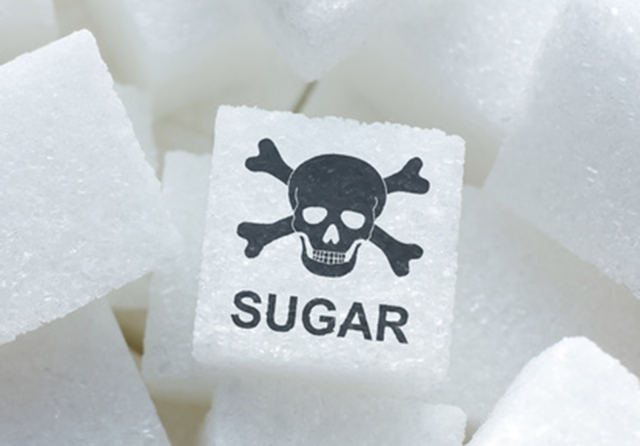Excess sugar intake is linked to many health problems. Recent research has shown that high sugar intake can greatly increase heart disease risk, and a new MRI technique even confirmed that cancer cells feed on sugar.
“A piece of fruit, or even a treat like ice cream, isn’t going to cause you too much trouble… provided it truly is just that – a treat and not something that you overindulge in,” says Dr. Joseph Mercola, a leading health expert and physician. “Most Americans, however, are overindulging – and that’s putting it mildly. The average American consumes one-third of a pound of sugar per day, half of which is processed fructose.”
The Food and Drug Administration (FDA) formally announced a change to nutrition labels. Now, new FDA labels show how much sugar you’re really eating.
The new nutrition labels will list the amount of added sugars along without recommended sugar consumption levels. The proposed would set the recommended intake of added sugar in food and beverages to no more than 200 calories per day. This would make the daily recommended intake about 13 teaspoons of added sugars. For reference, a can of Coke contains nearly 10 teaspoons.
“The FDA has a responsibility to give consumers the information they need to make informed dietary decisions for themselves and their families,” said Susan Mayne, director of the FDA’s Center for Food Safety and Applied Nutrition. “For the past decade, consumers have been advised to reduce their intake of added sugars, and the proposed percent daily value for added sugars on the Nutrition Facts label is intended to help consumers follow that advice.”
Health activists applaud the proposal, including the Center for Science in the Public Interest. CSPI Health Promotion Policy Director Jim O’Hara stated, “It’s about time consumers knew that a 20-ounce soda has 130 percent of the added sugars they should consume each day.”
Candy company Mars has already stated that they support the new added sugar labels.
Note: None of the information in our website is intended to diagnose, treat, cure or prevent any illness or disease. The content on our website is for educational purposes only.
DON’T FORGET to sign up for our weekly newsletter to get our latest articles, updates, free recipes and giveaways.
New MRI technique confirms that cancer feeds on sugar.
High sugar intake greatly increases heart disease risk.
Study links sugar to memory problems.
REFERENCES:
1. “FDA Proposes Placing Sugar Guide on Food Labels.” WSJ. Wall Street Journal, 24 July 2015. Web. 27 July 2015.
2. “Proposed Changes to the Nutrition Facts Label.” FDA.gov. U.S. Food and Drug Administration, n.d. Web. 27 July 2015.
3. “FDA Proposes Daily Value for Added Sugars on Nutrition Facts Labels.” Center for Science in the Public Interest. Center for Science in the Public Interest, 24 July 2015. Web. 27 July 2015.
4. “FDA Revises Proposed Nutrition Facts Label Rule to Include a Daily Value for Added Sugars.” FDA.gov. U.S. Food and Drug Administration, 24 July 2015. Web. 27 July 2015.

















